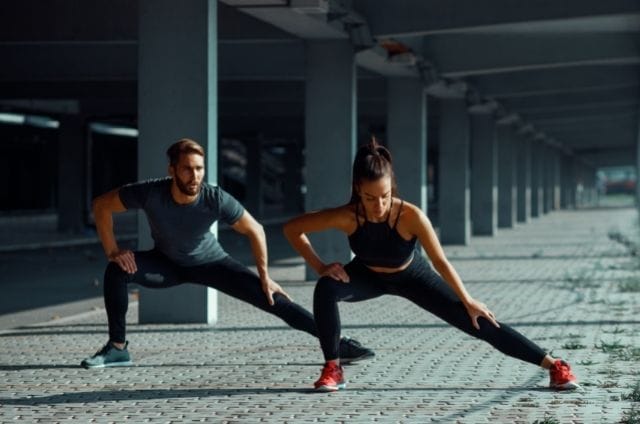Having an injury or limited mobility shouldn’t hinder you from performing workouts.
Exercise is not only designed for fitness enthusiasts who want to build muscle or lose weight. Some programs and equipment are also made especially for individuals with mobile disabilities.
We’ve gathered some of the best exercises and examples for those battling with limited mobility.
We also suggest you consult a medical professional first such as a doctor or a physical therapist before doing any exercises.
If you’re interested to know more about how to exercise with limited mobility, keep reading to find out.
How to Exercise with Limited Mobility

1. Simple stretching
One of the most convenient and gentle ways to exercise with limited mobility is by doing simple stretching.
Stretching is a flexibility exercise that allows you to decrease pain and stiffness, avoid getting a future injury, and improve your range of motion.
However, stretching is also suitable for individuals who have limited mobility. Stretching throughout the day can help lessen the pressure and pain on your muscles. This will help you since you sit or lay down for long hours.
If you only have limited mobility in your legs, you will still benefit from flexible workouts. Stretching will help you delay or avoid further muscle atrophy. Some examples of stretching are yoga and tai chi. It’s also best to attend yoga classes or watch online tutorials to ensure that it is practiced correctly.
If you prefer simpler stretching exercises, you can still achieve this by doing light physical activities such as walking, swinging, and shoulder rolls. Lastly, avoid deep stretches if your muscles are cold.
2. Low-impact exercises
Engaging in low-impact exercises is also vital if you suffer from limited mobility. Unlike other exercises, low-impact workouts help you work your body out at various intensity levels without feeling the severe impact on your joints.
A study about an exercise program in senior centers discovered that it helps decrease pain and improve mobility in older adults. Low-impact exercises also improve the conditions and quality of life of older adults.
One good example of a low-impact exercise is by walking with terrain or a well-supported shoe. Yoga and swimming are also great for people with limited mobility.
These exercises can be easily changed to meet a range of differing mobilities. You can also invest in a 2-in-1 elliptical and bike combo to achieve your fitness goals faster.
3. Swimming
Swimming may seem like a daunting activity, but a water-based exercise can also offer many benefits for those who have mobile disabilities. There is a wide range of aerobic activities you can participate in. However, swimming is the one that’s often both accessible and fun.
Engaging in aerobic activities such as swimming is important to one’s emotional, mental, and physical well-being.
It also allows you to build strength, improve mental health, and many more. Aside from swimming, drinking the best peptide for muscle building can also improve your exercise performance and recovery.
For those who have limited mobility, swimming can help alleviate pressure on your joints and muscles. This can be achieved even just by simply floating in the water. The water is an excellent support system for your body, and it decreases the effects of gravity.
4. Cardiovascular exercises
Despite being confined to a wheelchair, it’s still possible for you to perform cardiovascular exercises.
Cardiovascular workouts are one of the most common exercises that fitness enthusiasts engage in. Cardio increases your endurance and raises your heart rate. Some examples that people with limited mobility can do are walking, swimming, and “aqua jogging”.
Exercising in water is beneficial for those with mobile disabilities as it lessens the risk of muscle discomfort and supports the body.
A health report by Harvard Medical School stated that there are workout options for those who are frail or have limited mobility such as basic cardio workouts, walking workouts, and pool workouts.
Other examples are hand cranks that are similar to bikes you pedal with your arms. You can also utilize anti-gravity treadmills that enclose your lower body and the treadmill in an airtight bubble to reduce the impact as you walk or run.
5. Strength Training
Strength training is also another suitable exercise for those with limited mobility. This type of workout includes using resistance such as weights. Studies also show that strength training can improve muscle mass, strength, and function in mobile-limited older adults.

However, your limited mobility may also limit or reduce your use of resistance bands and free weights. If you’re looking for safe ways to work around mobility, seek a doctor or physical therapist before taking any action. You can also utilize machines that focus on the lower body.
If your legs only have limited mobility, your main focus will have to be on upper body strength training. On the other hand, if you have injuries on your shoulders, concentrate on your core and legs instead.
Conclusion
Having limited mobility or other physical disabilities shouldn’t be an obstacle for you to exercise. There are many workout programs and routines that will fit your abilities and still offer you benefits.

